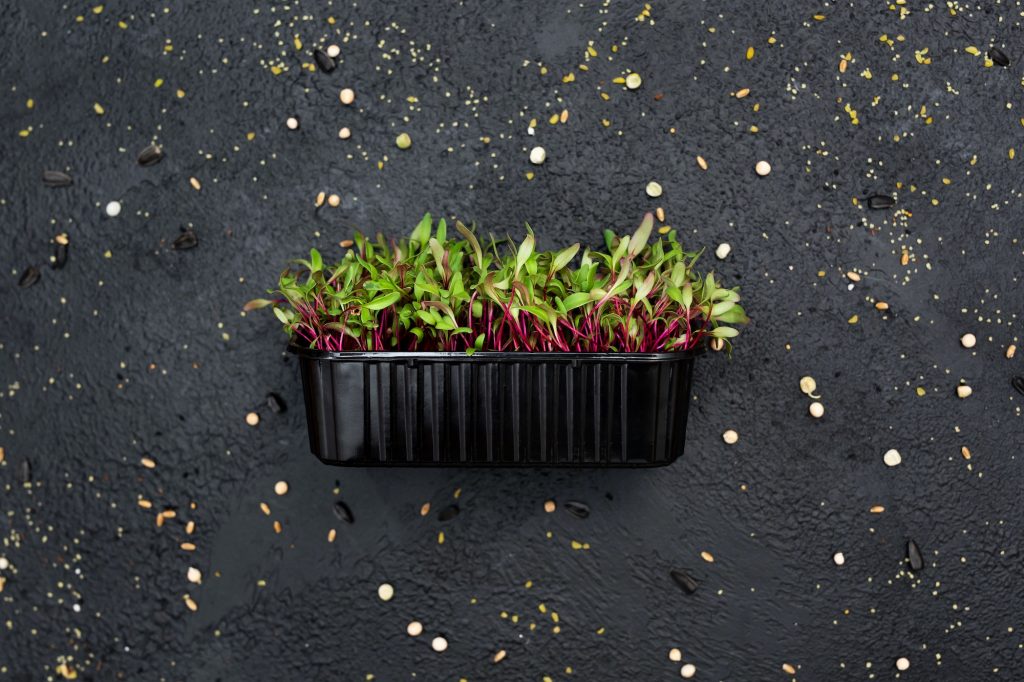If you’re looking for a quick and easy way to add some nutritional value to your diet, microgreens are a great option. These tiny, nutrient-packed plants can be grown in your own home and can be used in a variety of dishes. In this article, we’ll go over everything you need to know to get started growing your microgreens.

What are microgreens?
Microgreens are tiny plants that are harvested when they are only a few inches tall. They are often used as a garnish or added to dishes for extra flavour and nutrition. Microgreens come in a variety of colours and flavours and can be grown from a wide variety of seeds.
Why grow microgreens?
There are several benefits to growing your microgreens. First and foremost, they are incredibly nutritious. Microgreens are packed with vitamins and minerals and can be a great way to add some extra nutrition to your diet. Additionally, they are easy to grow and can be grown indoors, making them a great option for those who don’t have access to a garden.
Getting started
Choosing your seeds
The first step in growing your microgreens is to choose your seeds. There are a wide variety of seeds that can be used to grow microgreens, including broccoli, kale, arugula, and radish. When choosing your seeds, look for high-quality, organic seeds that are specifically labelled for microgreens.
Choosing your growing medium
Once you have your seeds, you’ll need to choose a growing medium. There are some options available, including soil, coco coir, and hydroponic mats. Each has its advantages and disadvantages, so it’s important to choose the one that works best for your setup.
Planting your seeds
To plant your seeds, fill a tray or container with your chosen growing medium. Scatter the seeds evenly over the surface of the medium, being careful not to overcrowd them. Cover the seeds lightly with more growing medium, and mist them with water.
Caring for your microgreens
Watering
One of the most important things to keep in mind when growing microgreens is to water them properly. Microgreens need to be watered frequently, but not too heavily. Overwatering can cause mould and other issues, so be sure to water your microgreens just enough to keep the growing medium moist.
Lighting
Microgreens also need plenty of light to grow properly. If you’re growing them indoors, you’ll need to provide them with artificial light. LED grow lights are a great option, as they are energy-efficient and provide the right spectrum of light for growing plants.
Temperature
Finally, it’s important to keep your microgreens at the right temperature. Most microgreens prefer a temperature between 60 and 70 degrees Fahrenheit. If the temperature gets too hot or too cold, your microgreens may not grow properly.
Harvesting and using your microgreens
Once your microgreens have grown to the desired size, it’s time to harvest them. Use a pair of sharp scissors to cut the microgreens just above the soil line. Rinse them gently with water, and pat them dry with a paper towel.
Microgreens can be used in a variety of dishes, including salads, sandwiches, and smoothies. They can add a burst of flavour and nutrition to any meal and are a great way to experiment with new flavours.
Troubleshooting common problems
While growing microgreens is relatively easy, there are a few common problems that you may encounter. One of the most common issues is mould growth, which can be caused by overwatering or poor ventilation. If you notice mould growing on your microgreens, remove any affected plants and adjust your watering and ventilation practices.
Another common issue is poor germination. If your seeds aren’t sprouting properly, it may be due to poor seed quality or improper planting techniques. Make sure to choose high-quality seeds and follow the planting instructions carefully.
Conclusion
Growing your microgreens is a great way to add some extra nutrition to your diet. With just a few basic supplies, you can grow a wide variety of nutrient-packed plants right in your own home. By following the tips and techniques outlined in this article, you’ll be on your way to growing your microgreens in no time.

